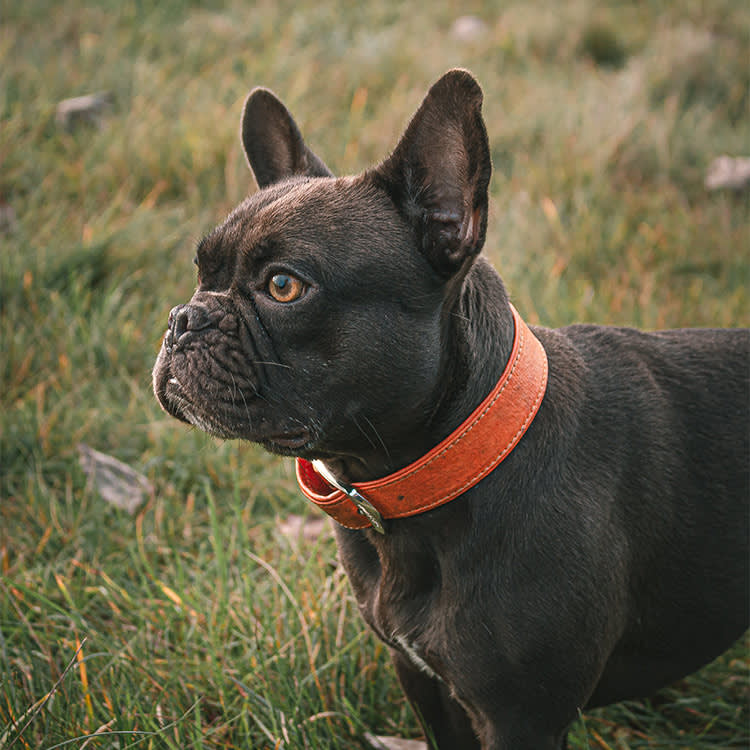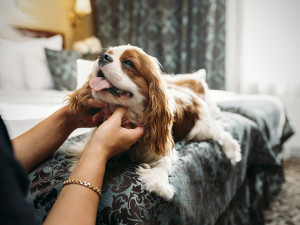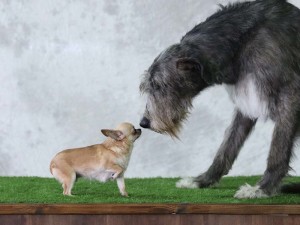Vets Can Do More To Reduce The Suffering of Flat-Faced Dog Breeds
Veterinarians must do more to discourage the breeding of animals with conditions known to seriously compromise their welfare.
Veterinarians have a professional and moral obligation to reduce or prevent any negative health impacts of disorders in animals. But what if animals are bred with known disorders? And what if those disorders are a big part of what makes them cute? This is the case with extreme brachycephalic or short-skulled dogs, including French Bulldogs, Pugs, British Bulldogs, Boston Terriers, and Cavalier King Charles Spaniels.
The trend towards shorter skulls seems to have taken hold since the 1870sopens in new tab and the development of breed standards that inadvertently encouraged extreme “conformation” (shape, size, and anatomical proportions). In companion animal practice, the veterinary profession is kept busy ministering to these dogs and bringing them into the world, with more than 80%opens in new tab of Boston Terriers, British Bulldogs, and French Bulldogs being born by Caesarean section.
Snap a pic of your pup’s teeth, and GREENIES™ will help you spot potential signs of oral health issues.
What is BOAS in Dogs?
Extreme brachycephaly is associated with a range of disorders, most notably Brachycephalic Obstructive Airway Syndrome (BOASopens in new tab). BOAS occurs in shorter-skulled dogs because the nose, tongue, soft palate, and teeth are crammed into a relatively small space, reducing the size of the airway. Symptoms of BOASopens in new tab include increased respiratory noise, effort and difficulty in breathing, an intolerance to exercise, gagging, blue gums (in the mouth), overheating, and fainting.
Brachycephalic dogs probably experience the unpleasantness of air hungeropens in new tab (lack of oxygen and surplus of carbon dioxide) and, compared with healthy non-brachycephalic dogs, show marked increasesopens in new tab in respiratory rate as temperatures rise.
How much do you spend on your pet per year?
Can’t stand the heat.
The hotter the temperature, the harder these dogs have to work to cool down by panting. As a result, the tissues of the upper airway swell, further reducing airflow and eventually causing airway obstruction, which causes them to get hotter. It’s a life-threatening vicious cycle.
This reduced capacity to cope with heat explains why Qantas no longer permitsopens in new tab the transport of affected breeds on flights longer than five hours or those with more than two sectors per journey. Affected dogs also change the way they sleep to avoid airway obstruction, sometimes by adopting a sitting position. They also raise their chins or sleep with a toy between their teeth to keep their airways open. Indeed, 10% can sleep only with an open mouthopens in new tab.
Extremely short skulls are associated with excess carbon dioxide concentrations (that shift the acid-base balance of the blood), neurological deficits, skin disease, eye disease, and certain behavioral disorders. Brachycephalic dogs also have an increased anesthetic risk – and yet increasinglyopens in new tab need surgery to treat these problems. This is not new information. For example, in 2008, the documentary Pedigree Dogs Exposed revealed the impact of extreme brachycephaly on dogs.
But they’re popular dogs.
Despite accumulating evidence about the health and welfare impacts of brachycephaly, affected breeds are becoming more popular. In the last decade, registrations of French Bulldogs have increased by around 3,000%opens in new tab. This prompted kennel clubs to warn prospective pet parents about the real possibility of bad breeders trying to cash in on the trend.
Brachycephalic breeds are booming in popularity in Australia where, since the mid-1980s, puppy purchasers have increasingly favoredopens in new tab shorter, smaller, brachycephalic breeds.
A costly health problem
Extreme brachycephalic dogs aren’t the only ones bearing the costs of inherited health and welfare problems. Figures from overseasopens in new tab and Australian pet insurance providers confirm that the financial costs of owning extreme brachycephalic dogs are high. This is due to the many conditions they suffer from, including, but not limited to, BOAS.
Analysis of more than 1.27 million Australian pet insurance claims over a nine-year period (2007-2015) confirms this. Brachycephalic dogs were more likely to suffer from a number of health conditions when compared with non-brachycephalic dogs. They also suffer from fungal skin diseaseopens in new tab, skin cancer, brain disordersopens in new tab, back problems, and difficulties giving birth. Dysphagia (problems swallowing), vomiting, regurgitation, and flatulence are other common clinical signs in brachycephalic breeds.
There is also the emotional cost of owning dogs that may require extensive treatment and live, on average, shorter livesopens in new tab than their longer-nosed canine counterparts.
What more can vets do?
The brachycephalic dog patient may place veterinarians in ethically challenging situations when they are approached to help in the treatment and breeding of affected animals. In discussing breed-associated disorders, veterinarians may appear to be critical of the very features that clients find most endearing about their companion animals and some have preferred to speak up only anonymouslyopens in new tab. Or veterinarians may have a conflict of interest if they draw an income from treating typical disorders.
But unless veterinarians and breed organizations speak up, the demand for extreme brachycephalic breeds will continue. The enormity of the welfare problem is increasing with the increased demand for affected dogs.
The Australian Veterinary Association (AVA) and the RSPCA Australia joined forces back in 2016 to promote awareness of these health and welfare problems in their Love is Blindopens in new tab campaign. Breeder organizations are exploring ways to moderate extreme shapes in the show ring. For example, a surveyopens in new tab published last year of 15 national kennel clubs, identified exaggerated morphological features and inherited disorders as their chief concerns.
Companies can also play a role. Last year New Zealand’s online marketplace Trade Me banned the sale of Pugs, French Bulldogs, and British Bulldogs on animal welfare grounds. In recognition of the media’s role in generating this demand, the British Veterinary Association no longeropens in new tab uses adverts depicting brachycephalic breeds. The Australian Veterinary Association also avoids the useopens in new tab of images of other breeds with exaggerated features, such as Shar-Peis and Dachshunds.
Every veterinarian must provide every individual patient with the best possible care they can. But given what we know, we’re also morally obliged to discourage the breeding of dogs with extreme brachycephaly so that we can turn off the tap on this suffering.
It’s also something potential dog parents should be more aware of. They might think they look cute, but those extreme brachycephalic dogs could be costly, both financially and emotionally.
This article is republished from The Conversationopens in new tab under a Creative Commons license. Read the original articleopens in new tab.








